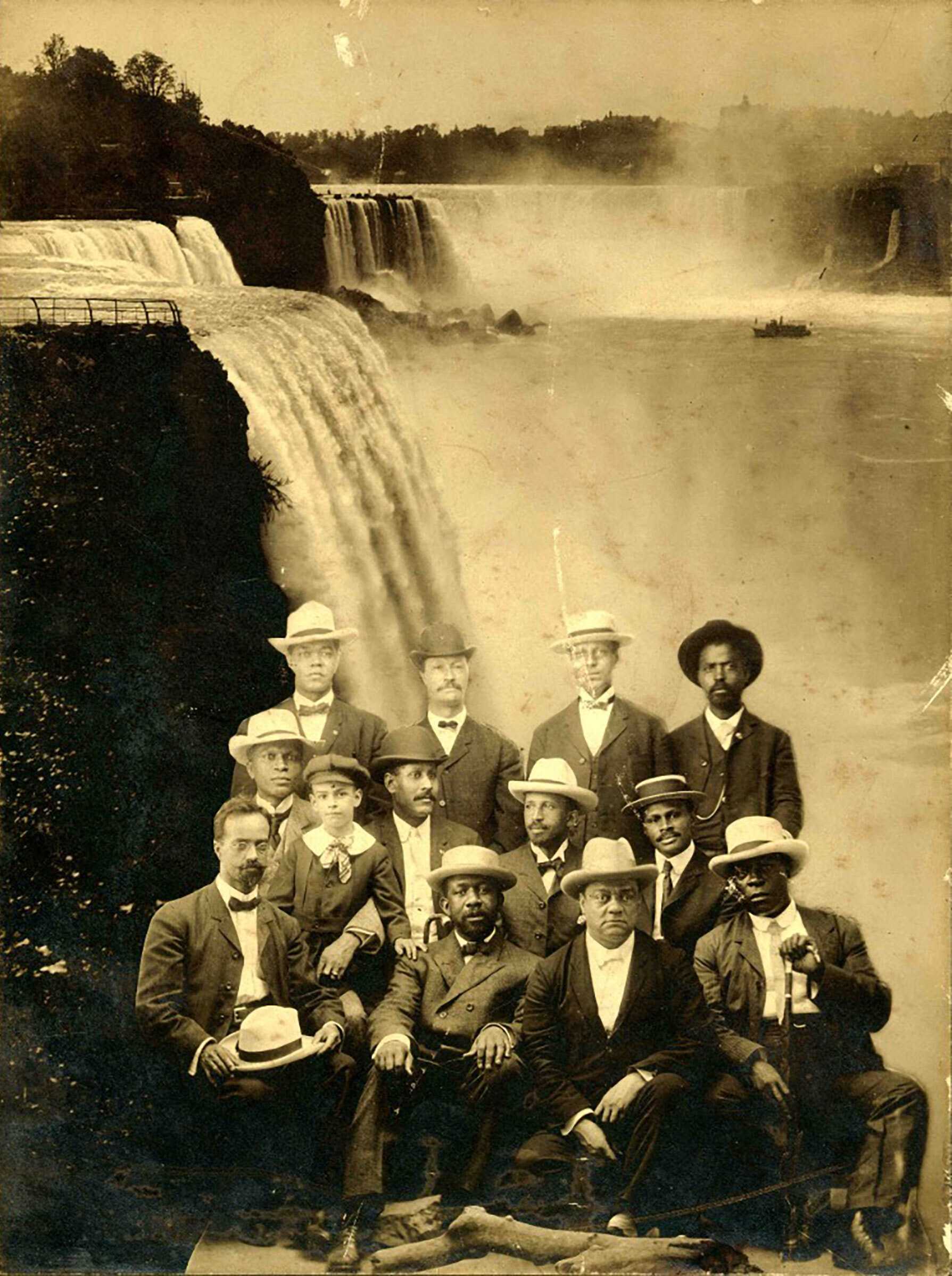Strategies for Justice
Niagara Movement Founders at Niagara Falls
In 1905 scholar W. E. B. Du Bois and journalist William Monroe Trotter convened a group of African American intellectuals in Niagara Falls, Canada, to discuss strategies for challenging racial injustice. The activists of the Niagara Movement favored direct and immediate action to end segregation, in contrast to the gradual approach promoted by Booker T. Washington. Washington’s position—that change for Black Americans could be measured and that Black Americans needed to prove their value—prevailed at the time and was embraced by white philanthropists. The principles of the Niagara Movement, in contrast, called for social and political equality, and expansive opportunities in economic endeavors, without delay.
Featured Video
“Knowledge Wasn’t Enough”
In this 1961 interview, W. E. B. Du Bois (1868–1963) recounted how an experience he had as a professor at Atlanta University in 1899—a firsthand encounter with the aftermath of a brutal lynching—inspired his transformation from academic to activist.
We refuse to allow the impression to remain that the Negro-American assents to inferiority, is submissive under oppression and apologetic before insults. Through helplessness we may submit, but the voice of protest of ten million Americans must never cease to assail the ears of their fellows, so long as America is unjust.
Niagara Movement, Declaration of Principles, 1905
“Declaration of Principles”
“Declaration of Principles,” 1905
The Niagara Movement called for the immediate end of segregation and full civil and political rights for African Americans. Members were committed to serving as an organization for vocal protest and aimed to publicly protest injustices and violence against Black Americans on a national scale. In their first year, the Niagara Movement gained 150 members and established branch chapters in 17 states.
Niagara activists expressed public protest through publications and the lobbying of legislatures to condemn segregation and demand civil rights laws. After the 1906 race riot in Atlanta, for instance, the group sponsored test cases to challenge Jim Crow laws. Although the group dissolved in 1910 due to a lack of financial resources and from internal strains, the Niagara Movement demonstrated the will and desire to bring radical and emphatic demands to a public forum. Du Bois encouraged members to join the newly formed NAACP to continue the fight against discrimination.
A Tradition of Legal Action
Left to right: George E. C. Hayes, Thurgood Marshall, and James M. Nabrit, congratulating each other following Supreme Court decision declaring segregation unconstitutional.
The NAACP's official publication, The Crisis, was the leading intellectual journal dedicated to African American causes and concerns. It has been published quarterly since its founding in 1910. Today, the journal focuses on sustaining discussions about race and proposing solutions to racial injustices.
The National Association for the Advancement of Colored People (NAACP), founded in 1909, continues to serve as a leader in the demand for civil and human rights. Catalyzed by horrific riots in Springfield, Illinois, in 1908, a multiracial coalition of lawyers, educators, reformers, and public intellectuals established a national organization to advocate politically and legally for minorities. The NAACP focused on litigation, challenging anti-constitutional laws, and lobbying Congress to change such laws aiming to ensure the civil rights of all its citizens. Early successes included Guinn v. United States (1915), a Supreme Court case brought by NAACP lawyers that asserted the states practicing grandfather clause exemptions to literacy test requirements for voters was unconstitutional.
Today the NAACP declares its mission “to ensure the political, educational, equality of minority group citizens of States and eliminate race prejudice. The NAACP works to remove all barriers of racial discrimination through democratic processes.”
